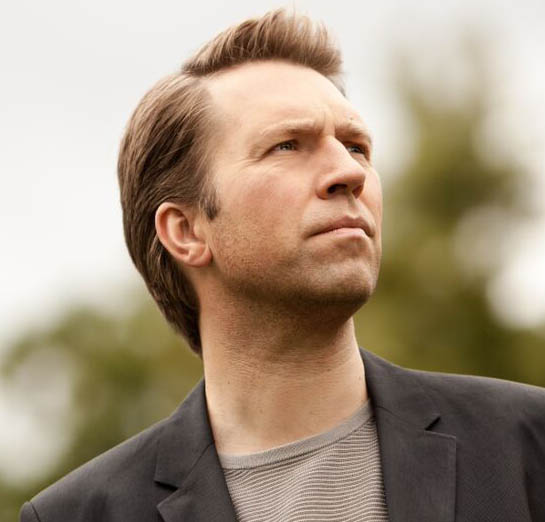After four years, 55 cities in 22 countries and an award-winning recording, Leif Ove Andsnes’s Beethoven journey came to an end last night in an emotionally charged evening at the Royal Albert Hall. And in a delightful light-hearted moment after all the serious music making was done, Andsnes finished the concert vigorously playing the tambourine in an orchestral encore.
The highlight of the evening was, perhaps unexpectedly, the Second Piano Concerto, which ended the first half. Much revised and meddled with by Beethoven over nearly 15 years, this is the sunniest of the concertos. It was played by Andsnes at the Proms in 1995, early in his career, and it would be interesting to be able to compare the two performances. On this occasion he was elegant in the first movement, reverent in the second and sparkling in the syncopated finale. The synergy between orchestra and soloist, by now so familiar with the music and with each other, allowed fresh details to emerge, such as where a scale in the piano would be seamlessly continued by the violins.
For the most part Andsnes made a persuasive case for leading these pieces from the keyboard
Andsnes clearly revelled in being between the violin sections, seated antiphonally, bringing out Beethoven’s deft second violin writing and basking in moments of unbelievably hushed string playing in the second movement. The finale is Beethoven at his most life-affirming, not through a profound statement of universal brotherhood, but through the joyous rhythms that animate our lives. If it is the job of a critic to criticise I am in trouble: there was nothing about this performance I didn’t like.
To begin with we had Stravinsky’s Octet as a palate-cleansing amuse-bouche. In this neoclassical tribute to 18th Century wind serenades, Stravinsky plays with the expectations of his audience. The formal, trill-laden introduction leads to a contrapuntal first movement and a theme-and-variations second (embracing a march and a lopsided waltz). The finale starts like a Bach two-part invention (the two bassoons fantastic here, as throughout) and ends in a kind of bossa nova avant la lettre. The playing was tight and well-balanced despite an occasionally cloudy flute tone; trumpeter Christopher Dicken showed that virtuosity does not just reside in pyrotechnics, but in placing and weighting and quality of sound.
The second half was given over to a heroic performance of that most heroic of concertos, the Emperor. This was not flawless like the Second, it was merely very, very good. From the start there was a brisk tempo, a feature of Andsnes’s interpretations generally. The orchestral sound was big without being unwieldy – this is very much a chamber orchestra – and the natural trumpets and hard-sticked timpani were able to cut through.
 Andsnes (pictured right) had less time for conducting than in the other concertos, having his hands full with playing the notes, but his directing was as authoritative and sensitive as it had been throughout. For the most part he made a persuasive case for leading these pieces from the keyboard, often achieving co-ordination through a small nod of the head, and showing how, in tricky moments, a conductor can multiply rather than reduce the difficulties. Conducting also counteracts any tendency for the soloist to switch off between entries; there was no question of Andsnes doing that here.
Andsnes (pictured right) had less time for conducting than in the other concertos, having his hands full with playing the notes, but his directing was as authoritative and sensitive as it had been throughout. For the most part he made a persuasive case for leading these pieces from the keyboard, often achieving co-ordination through a small nod of the head, and showing how, in tricky moments, a conductor can multiply rather than reduce the difficulties. Conducting also counteracts any tendency for the soloist to switch off between entries; there was no question of Andsnes doing that here.
But for all that there were marvellous things going on – including the tricky transition between second and third movements – there were also some small gripes. The second movement, which started at a bright, two-in-a-bar tempo, lost speed as it progressed (something Andsnes avoided in his recording); the last movement was rhythmically imprecise in places; and there was something peculiar going on in the solo bassoon entry near the end.
But Andsnes rightly received a terrific reception at the end with standing ovation, several curtain calls and two encores, one for solo piano and one (highly deserved) for the orchestra. As the audience left, the players on stage embraced each other, going their separate ways after an extraordinary project they will all feel honoured to have taken part in.












Add comment